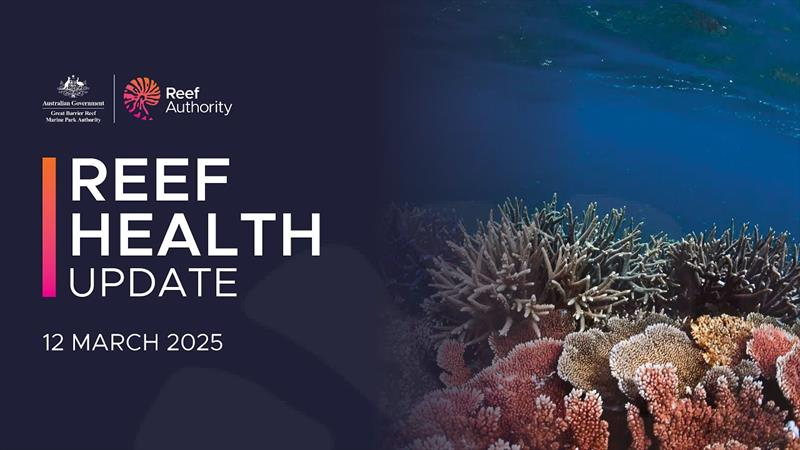
Reef Health Update | 12 March 2025
by Great Barrier Reef Marine Park Authority 13 Mar 07:04 UTC
12 March 2025

Reef Health Update | 12 March 2025 © Great Barrier Reef Marine Park Authority
As the lead managers of the Great Barrier Reef, the Reef Authority keeps an eye on the Reef year-round — with efforts stepped up over summer, a typically high-risk period from extreme weather.
The Reef Authority releases updates on the health of Reef which includes; sea surface temperatures, rainfall and floods, cyclones, crown-of-thorns starfish outbreaks, and coral disease.
These updates are based on forecasts, water temperature heat mapping, in-water surveys, citizen science and aerial surveys.
Reef Health update | 12 March 2025
Sea surface temperatures remain above average in the Marine Park, while the February low-pressure systems did provide temporary relief, heat stress across much of the Reef has started to accumulate this past week.
To better understand the impact of the summer heat stress and flood plumes the Reef Authority, in partnership with the Australian Institute of Marine Science (AIMS) are currently conducting aerial surveys in the Far Northern and Northern regions.
Temperatures
Over the past week, sea surface temperatures increased in the Far Northern region to 1.1-degrees above average, while temperatures remained steady in the Northern region (0.8-degrees) and the Central region (0.4-degrees) above average. Temperatures dropped in the Southern region to 0.3-degrees above the long-term average in the wake of Cyclone Alfred.
The Bureau of Meteorology forecasts for April, indicate sea surface temperatures will decline overall but remain 0.6-degrees to 1-degree above the long-term April average across the Marine Park.
Rainfall
For the remainder of March, rainfall is likely to be above average for much of Australia.
Reef health
226 Reef Health Impact Surveys (RHIS) were conducted across the Marine Park. From the 24 reefs surveyed, 17 had some level of bleaching.
In the Central and Southern regions, some reefs showed low levels of coral bleaching. While in the Northern region most reports of bleaching were of low to medium level. While no data was collected in the Far Northern region, this is an area where aerial surveys are being conducted this week.
Crown-of-thorns starfish (COTS) outbreaks continue to be most severe in the Southern Region (Swain Reefs) and between Port Douglas and Lizard Island. Isolated and less severe outbreaks are persisting offshore Townsville and the Whitsundays. The Crown-of-thorns Starfish Control Program is continuing to suppress outbreaks and protect coral across hundreds of reefs.
Reef management
As the lead managers of the Reef, we are working closely with our partners to monitor conditions across the Marine Park during these high-risk summer months.
We also use a range of management actions to support and build Reef resilience, including enforcing compliance with our zoning plan and ensuring people enjoy the Reef in a responsible way.
You too can help by reporting any incidents through the Eye on the Reef app, which is available for download on Google Play or Apple Store.